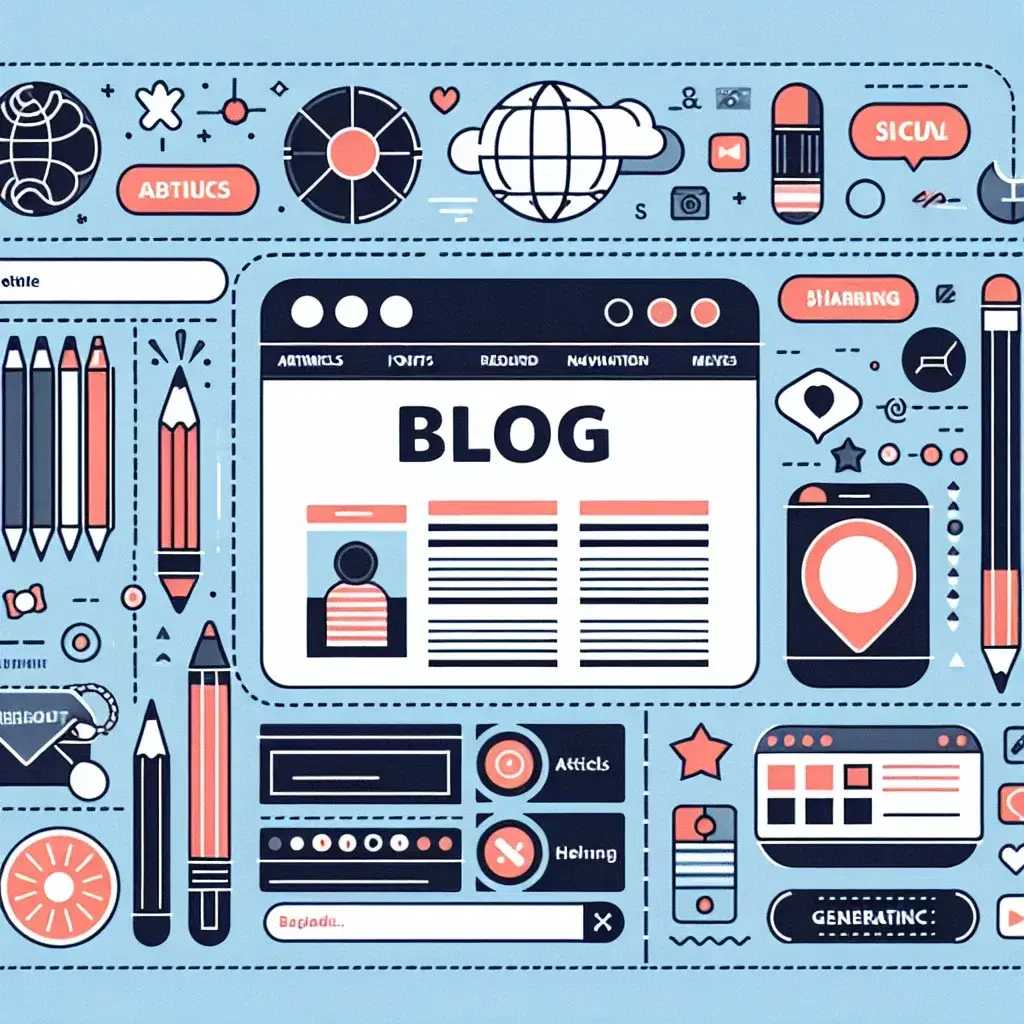How do I design an attractive blog layout?
Designing an attractive blog layout can significantly impact your website’s performance by engaging visitors and reducing bounce rates. Today, a well-designed blog encompasses not only great content but also an intuitive and visually appealing layout. This article will guide you through the essential elements to consider when creating a compelling blog layout.
Key Elements of an Attractive Blog Layout
Understanding the critical components of a blog layout is the first step towards designing one that engages your audience.
| Element | Description |
|---|---|
| Header | The top section that holds the blog title, logo, and navigation menu. |
| Sidebar | Contains widgets, links, or additional navigation options. |
| Main Content Area | The central part where you place your blog posts. |
| Footer | The bottom section offering links to essential pages, contact info, or additional resources. |
| Whitespace | Empty spaces around elements to ensure a clean look. |
1. Prioritize Clean and Simple Navigation
Your blog’s navigation should be straightforward and unobtrusive. Readers should find it easy to locate the content they are interested in without feeling overwhelmed by the number of options.
- Top Navigation Menu: Keep your main menu at the top and limit it to essential sections.
- Breadcrumbs: Add breadcrumb navigation to help users understand their location on the site.
- Sticky Menu: Consider a sticky menu that remains visible as users scroll down.
2. Choose a Readable Typography
The readability of your blog can be enhanced through careful typography choice. Select fonts that are easy to read across different devices.
- Font Types: Use web-safe fonts such as Arial, Georgia, or Helvetica.
- Font Sizes: Opt for a base font size around 16px for body text and larger sizes for headings.
- Line Spacing: Ensure adequate line spacing (1.5em-1.8em) for better readability.
3. Implement a Consistent Color Scheme
A harmonious color scheme not only makes your blog appealing but also enhances brand recognition. Stick to a few complementary colors to maintain cohesion.
- Primary Color: Choose a primary color that represents your brand.
- Secondary Colors: Use secondary colors to highlight important elements like buttons or links.
- Background and Text Color: Ensure a high contrast between background and text for readability.
4. Optimize for Mobile Devices
With the increasing use of mobile devices, it is crucial to ensure your blog design is responsive. A mobile-friendly layout improves user experience and can positively impact your search engine rankings.
- Use a responsive design framework like Bootstrap or Foundation.
- Enable viewport meta tags to ensure proper scaling on mobile devices.
- Test your design on various screen sizes to ensure it maintains its integrity.
5. Enhance User Experience with Multimedia
Incorporate multimedia elements such as images, videos, and infographics to make your content more engaging and informative.
- Images: Use high-quality images that are relevant to your content.
- Videos: Embed videos to give depth to your topics.
- Infographics: Create infographics to visually represent data or processes.
6. Organize Content with Whitespace
Whitespace, or negative space, is crucial for a clean and organized design. It helps to highlight important elements and makes the text more readable.
- Avoid Clutter: Resist the urge to fill every available space.
- Margin and Padding: Use margins and padding to create breathing room around content blocks.
- Balance: Ensure a balanced distribution of whitespace throughout the layout.
7. Utilize Effective Call-to-Actions (CTAs)
CTAs guide your readers towards desired actions, such as subscribing to a newsletter or sharing a post. They should stand out and be compelling.
- Button Design: Use contrasting colors for CTA buttons to make them easily noticeable.
- Placement: Position CTAs where they are most likely to be seen, such as at the end of posts or in sidebars.
- Clear Text: Use action-oriented language like “Subscribe Now” or “Learn More”.
8. Importance of Fast Loading Times
Website speed is crucial for user experience and SEO. Slow loading times can deter visitors and negatively affect your search engine rankings.
- Optimize Images: Compress images without losing quality to speed up load times.
- Use Caching: Implement browser caching to reduce load on your server.
- Minimize Resources: Reduce the number of HTTP requests by combining CSS and JavaScript files.
Conclusion
Designing an attractive blog layout is a blend of aesthetics and functionality. By focusing on clean navigation, readable typography, a consistent color palette, and optimizing for speed and mobile devices, you can create a blog that not only draws visitors in but also keeps them engaged. Remember, a well-designed blog layout showcases your content in the best possible light, making it easier for readers to enjoy and share your posts.

